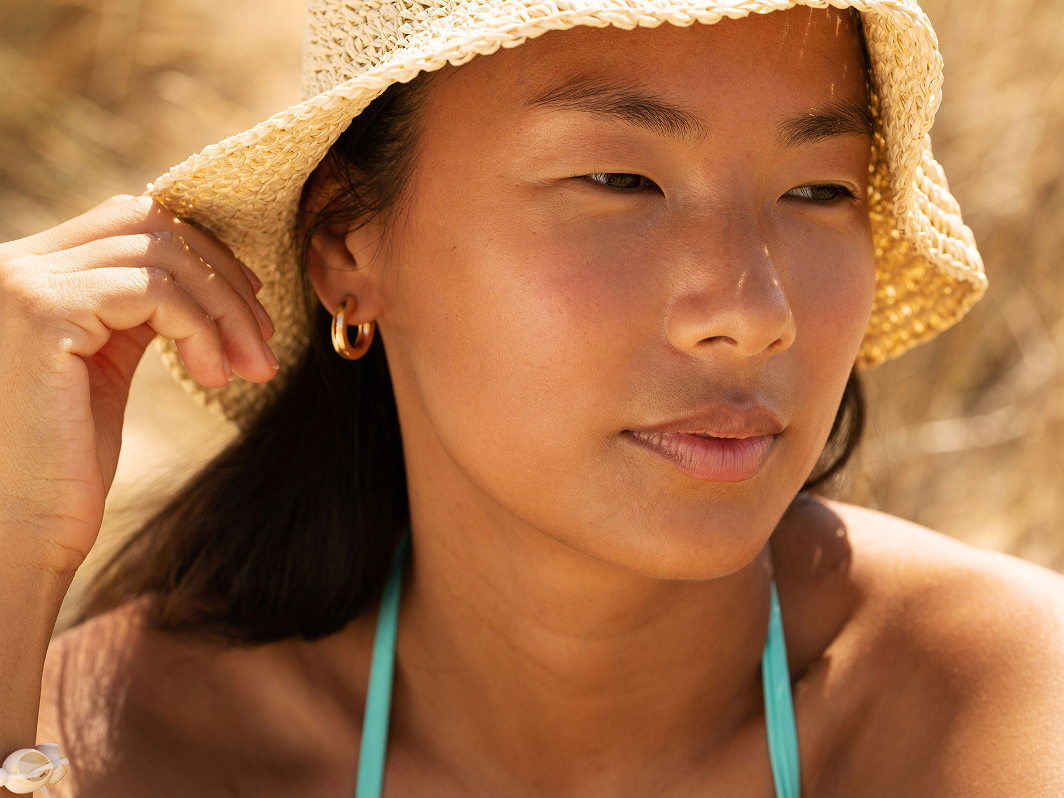What is ultraviolet radiation (UVR), and why does it matter when we’re thinking about skin health?
Ultraviolet radiation is energy produced by the sun. It can be divided into three types – UVA, UVB, and UVC.
UVC: UVC radiation is the most dangerous to us. Currently it is screened out from reaching the earth’s surface by the ozone layer. Interestingly, most of the UVA and UVB radiation emitted by the sun is also screened out by ozone gas. But, the amounts that reach us on earth are still a problem.
UVB: This is a more “energetic” wavelength, and is the main cause of sunburn. UVB is blocked out by window glass. Phew!
UVA: Is “less energetic” than UVB and UVC. But, UVA is a problem as it penetrates more deeply into the skin, AND, is able to penetrate through window glass. Bother.
Both UVA and UVB radiation contribute to the development of:
- Precancerous changes (“sun spots”, actinic keratoses) in the skin
- Skin cancers including basal cell carcinoma, squamous cell carcinoma, and melanoma.
- "Aging” effects on the skin such as fine lines, wrinkles, roughness and textural change, fixed redness, pigmentation, and loss of luminosity and elasticity of the skin. Boo.
The good news is that the above problems ARE PREVENTABLE with careful daily sun protection. Yes, that’s right folks, with easy-peasy daily sun protection, we can stop the majority of these unwanted changes from affecting our skin. Putting myself out of a job, huh? In all seriousness, nearly 2000 Australians die every year from skin cancer, which is related to overexposure to UV. We have one of the highest rates of skin cancers in the world. Some years, we have the dubious honour of the highest rate. Some of the people are as young as you are. UV radiation is a bit sneaky. We can’t see it or feel it until it’s too late, and we’ve developed a sunburn. By the time we’ve developed a natural tan, or sunburn, the damage is done. The DNA in our skin’s cells has been damaged, and over time, this will definitely lead to premature skin aging, and if we’re unlucky, eventually precancerous skin changes or skin cancer.
I said that this is preventable. But, how? (I am not just a harbinger of doom!). First and foremost, choose a broad-spectrum UVA and UVB blocking sunscreen, AND wear it every day. Given that we can buy SPF50+ sunscreens now, why not choose the best? I’m often asked what I think is the best sunscreen. It’s the one that you love enough to wear every day. And, believe it or not, you will find a sunscreen that you love. In my opinion, we make the most elegant sunscreens in the world, right here in Australia.
The most important time to wear sunscreen is when the UV Index is 3 or greater. This occurs on most days of the year in much of Australia. So, it’s very easy to get caught out. There’s a slightly cool breeze, and you think you won’t get burnt, and then you do! It’s super easy to check your local UV Index either on the SunSmart app, or on your favourite weather website. The UV Index is crucial, because it can be 3 or more even on cool, cloudy and rainy days. But, don’t just rely on sunscreen. Make sure to seek shade when the UV Index is high (6 or greater), cover up with appropriate clothing, and a wide brimmed hat and sunnies. Don’t forget to reapply your sunscreen every 2 hours, or earlier if you’ve been swimming, sweating heavily, or have towelled off. To get the most out of your sunscreen, aim to apply it at least 20 minutes before you head out. If we do all of these things, we can enjoy our gorgeous Australian environment all year round, and be safe while we have fun in the sun.
Love, Dr K
